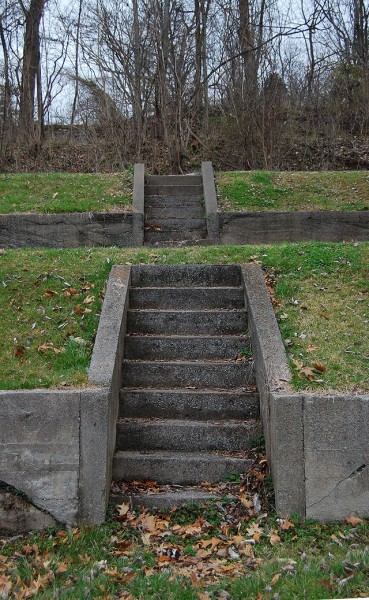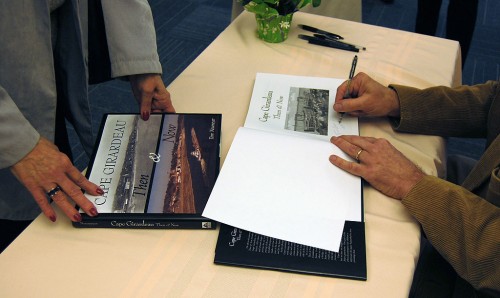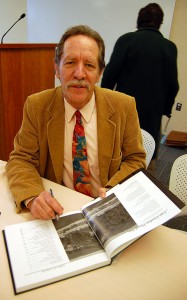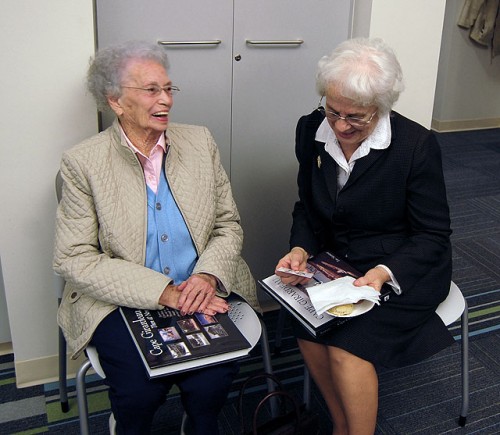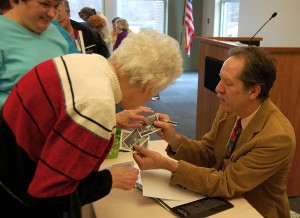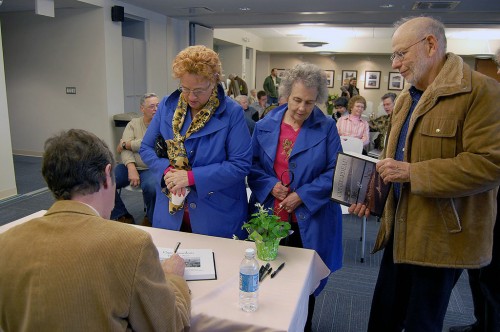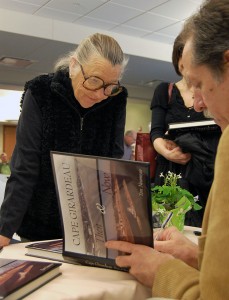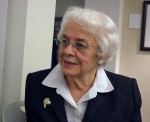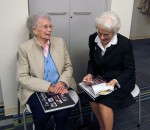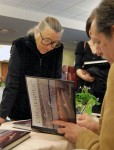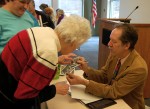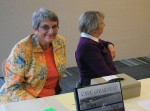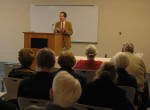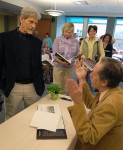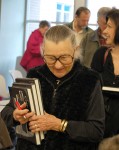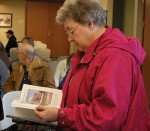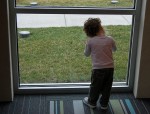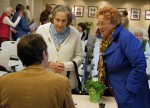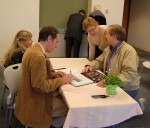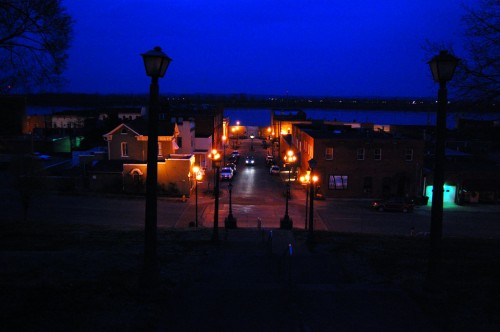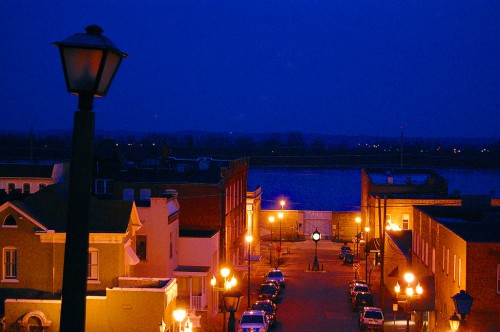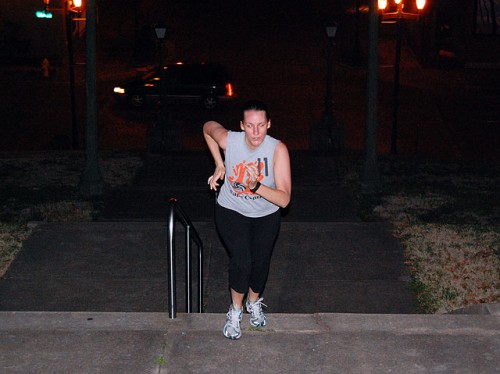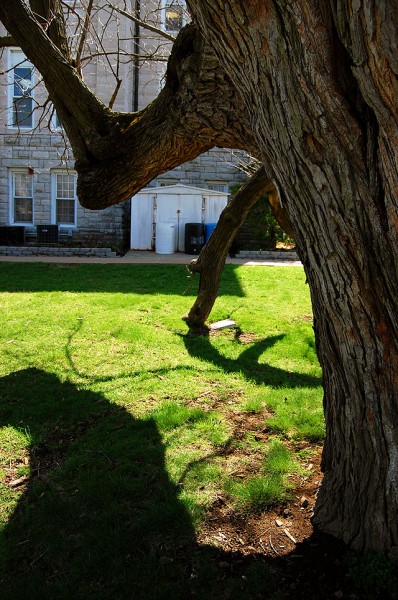 Bill Hopkins was kind enough to post a Facebook link to Brian Blackwell’s Southeast Missourian story that the Cape County commissioners are opposed to a new roundabout design in Jackson. Sounds like one of those Dull But Necessary stories real newspapers still have to cover.
Bill Hopkins was kind enough to post a Facebook link to Brian Blackwell’s Southeast Missourian story that the Cape County commissioners are opposed to a new roundabout design in Jackson. Sounds like one of those Dull But Necessary stories real newspapers still have to cover.
Hang on for the interesting part
A point of contention is that the roundabout could endanger a tree that was used to hang people who were convicted of murder. The tree is more than 100 years old and is the last “hanging tree” in the county, Presiding Commissioner Gerald Jones said.
The proposed roundabout would come within a few feet of the tree trunk, causing possible damage.
“If these three commissioners agree to give up that much of our beautiful courthouse lawn, there would be a three-person hanging on that hanging tree,” Jones said. “And I believe that would be us.”
I had to see the Hanging Tree
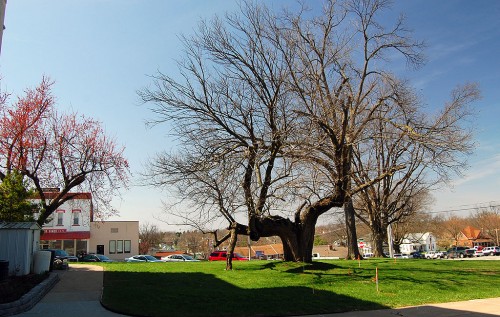 I mean, after all, I WORKED for The Jackson Pioneer, right across the street from the County Courthouse. I had never HEARD of the Hanging Tree. This was embarrassing. Besides, it was lunchtime and a trip to Jackson would give me another excuse to swing by Wib’s BBQ.
I mean, after all, I WORKED for The Jackson Pioneer, right across the street from the County Courthouse. I had never HEARD of the Hanging Tree. This was embarrassing. Besides, it was lunchtime and a trip to Jackson would give me another excuse to swing by Wib’s BBQ.
After having a brown hot (with Cole slaw on it), fries and a Mr. Pibb, I was off to the courthouse. The only problem was I had no idea which of at least three trees could be the Hanging Tree. I needed expert guidance.
Let’s start at Mapping & Appraisal
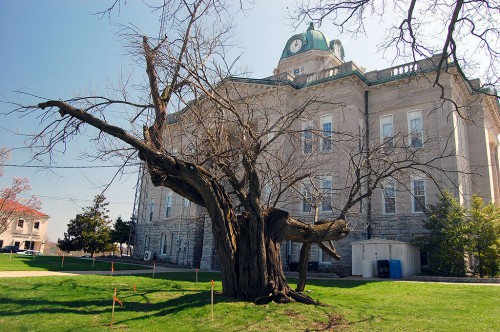 The very nice woman behind the counter in the Mapping and Appraisal office didn’t even smirk when I asked if she knew anything about the Hanging Tree. She simply said, “Come over here,” leading me to a window. “It’s that one.” She pointed to a tree that I had dismissed as being too low to the ground.
The very nice woman behind the counter in the Mapping and Appraisal office didn’t even smirk when I asked if she knew anything about the Hanging Tree. She simply said, “Come over here,” leading me to a window. “It’s that one.” She pointed to a tree that I had dismissed as being too low to the ground.
“I thought that one looked like a broken-down Redbud tree. It doesn’t look like it’d be tall enough to hang anybody,” I said.
“My husband said that all of the old-time bad guys must have been four feet tall, but that’s the tree.”
A cool-looking Cape County Plat Book caught my eye, so I started to hand over my pocket plastic. “We don’t take those,” she said kindly.
“Will you take a check?”
“Sure.”
I handed her a West Palm Beach check signed with an illegible scrawl and she started to walk away. “Don’t you want to see any identification?” I asked her.
“Nah, I have your business card. I can find you.”
THAT’S how you know you’re back home. Of course, having a Hanging Tree outside your window may make you a little more sure that nobody is going to write you a bum check.
“Trust, but verify”
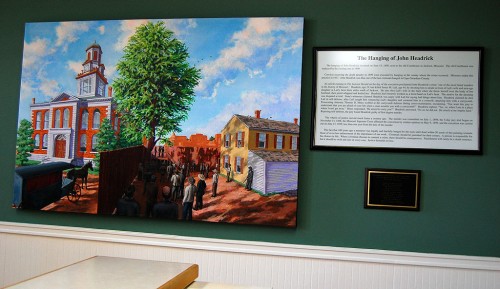 The Jackson Pioneer was a solidly Republican newspaper. The first major political speech I covered was Ronald Reagan stumping for Barry Goldwater in 1964. (We’ll cover that experience some other time.) That got me thinking about Reagan’s favorite saying, “Trust, but verify.”
The Jackson Pioneer was a solidly Republican newspaper. The first major political speech I covered was Ronald Reagan stumping for Barry Goldwater in 1964. (We’ll cover that experience some other time.) That got me thinking about Reagan’s favorite saying, “Trust, but verify.”
I went up to the second floor of the courthouse to an office overlooking the purported Hanging Tree. Not only did another nice lady verify Mapping and Appraisal Lady’s tree choice, but she pointed to a big painting on the wall with the story of poor John Headrick, the last person to take a ride on the tree on June 15, 1899.
Who was John Headrick?
I’m not going to go into a lot of detail. I’m going to save myself a bunch of typing by sending you to The Southeast Missourian’s July 22, 2001, version of The Hanging of John Headrick that’s next to the picture on the wall.
Here’s a genealogy site with another account that has slightly more and / or different details of the Headrick case.
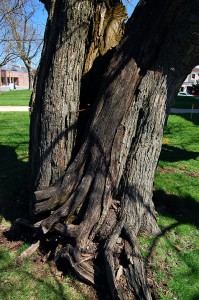 Bottom line is that John Headrick was a 19-year-old hired hand who worked for James M. Lail. Headrick may or may not have been romancing Lail’s daughter, Jessie, but he was fired after he was arrested for stealing a buggy.
Bottom line is that John Headrick was a 19-year-old hired hand who worked for James M. Lail. Headrick may or may not have been romancing Lail’s daughter, Jessie, but he was fired after he was arrested for stealing a buggy.
He returned to the farm, had a confrontation which resulted in Lail being shot dead. Lail’s wife, Vernie, trying to cover his body to protect him, was shot, beaten and stabbed by Headrick. While he was distracted by the daughter, Mrs. Lail ran for help. Headrick expressed a certain degree of admiration for the woman when he discovered she was alive, “By God, the old woman is gone, you can’t kill her, can you?”
Sheriff John H. Jenkins rounded up a posse of 30 to 40 men to hunt down Headrick and caught him hiding in Milt Golson’s barn.
On Nov. 19, 1898, Judge Henry C. Riley sentenced Headrick to “be hanged by the neck, between heaven and earth, until he is dead.”
The Missouri Supreme court affirmed the conviction and the execution was carried out on the Hanging Tree on the Jackson courthouse lawn.
Sheriff Bernard Gockel reported to the court, “I hereby certify that I served the within and attached Death Warrant, at the County of Cape Girardeau, State of Missouri, on the 15th day of June A.D. 1899, by reading the same to the within named John Headrick, and on the same day between the hours of six o’clock and seven o’clock, A.M., and at the same County and State, and within the Jail Yard of said County, within an inclosure surrounded by a fence higher than the gallows and sufficiently closed to exclude the view of persons on the outside, I did inflict the death penalty by hanging the said John Headrick by the neck until he was dead.”
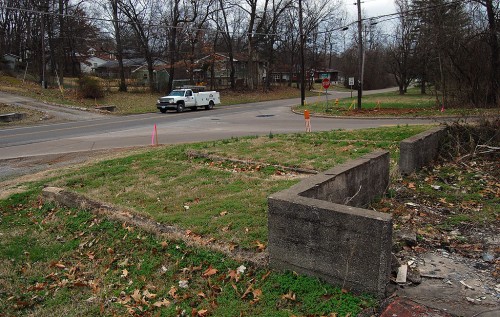 When I come to Cape, I like to cruise around looking for familiar places and to find roads my Mother and I have never been on. While on one of our explorations, we came across this foundation at the corner of Bertling and Big Bend Rd. Neither of us could remember what had been there.
When I come to Cape, I like to cruise around looking for familiar places and to find roads my Mother and I have never been on. While on one of our explorations, we came across this foundation at the corner of Bertling and Big Bend Rd. Neither of us could remember what had been there.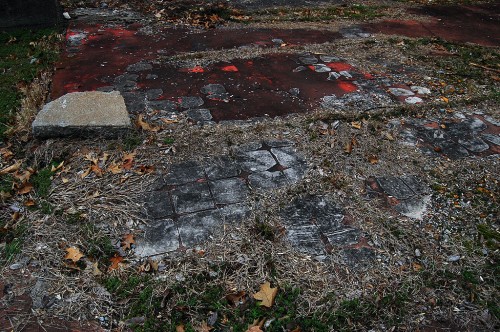 The layout didn’t feel like a house or a gas station.
The layout didn’t feel like a house or a gas station.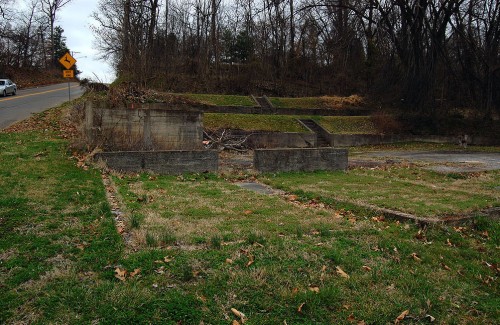 The two square foundations in front of the big foundation, with a walkway between them, are odd, too.
The two square foundations in front of the big foundation, with a walkway between them, are odd, too.
